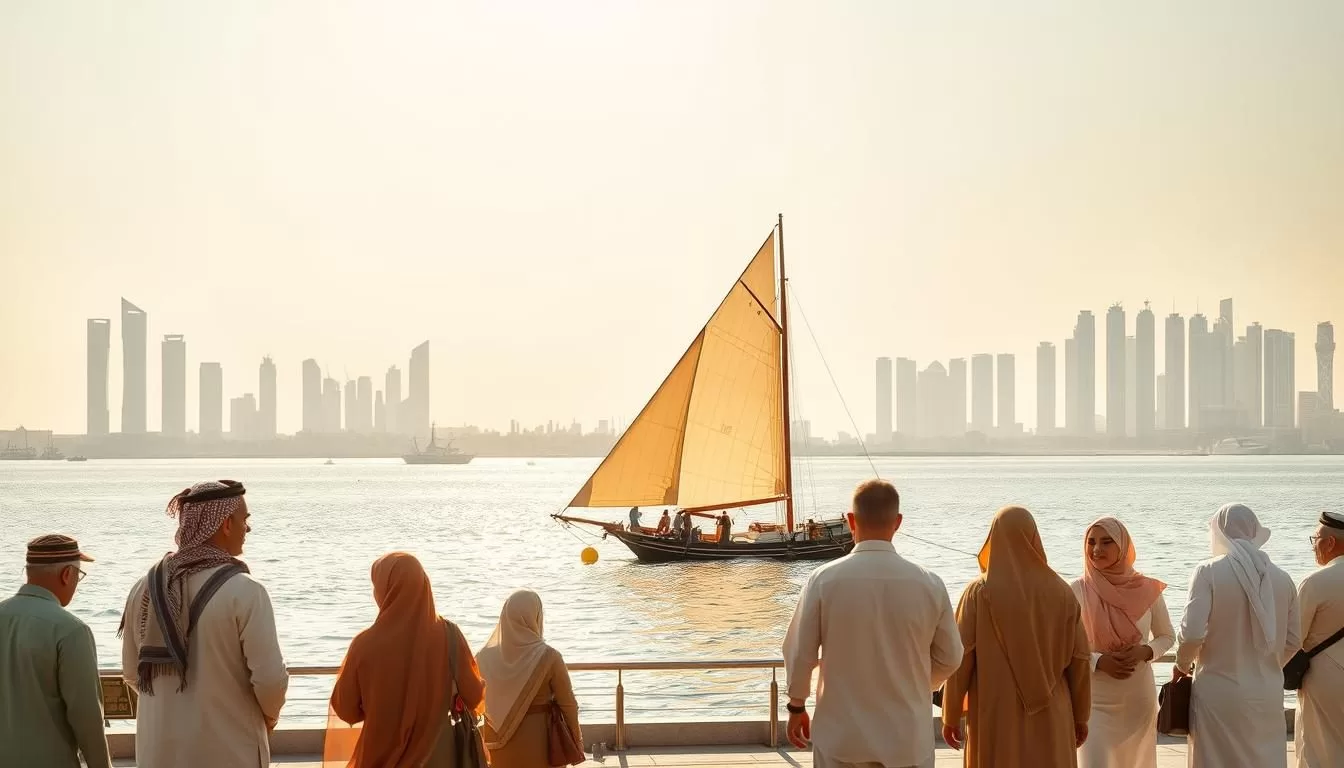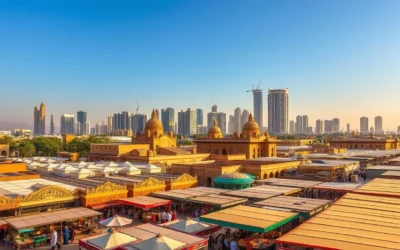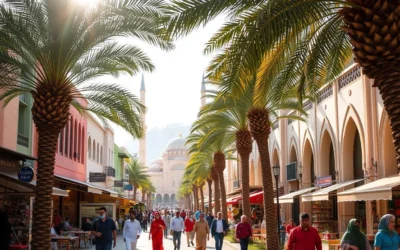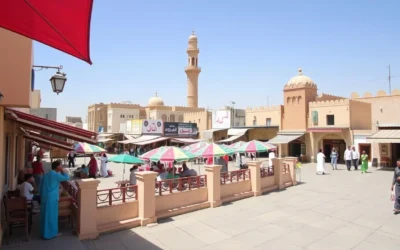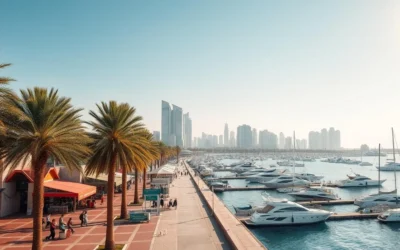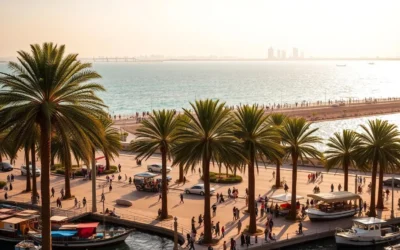Modern Standard Arabic is the official language of this country, used in formal settings like education, media, and documentation. It’s a key part of the nation’s identity, reflecting its rich history and culture. With a population of 4.5 million, the linguistic landscape is diverse, blending traditional and modern influences.
In everyday life, Kuwaiti Arabic is the preferred dialect, showcasing the country’s unique cultural heritage. This dialect is spoken by 2.55 million native speakers, making it a vital part of daily communication. It’s not just a language but a reflection of the people’s way of life.
Understanding the role of language here is essential for anyone interested in its culture and history. From education to business, it shapes how citizens connect and thrive. Dive deeper to explore how language influences this vibrant nation.
Overview of Kuwait’s Linguistic Landscape
The linguistic landscape of this nation is deeply rooted in its cultural heritage. It reflects a blend of tradition and modernity, shaped by centuries of history. Understanding this dynamic offers valuable insights into its identity.
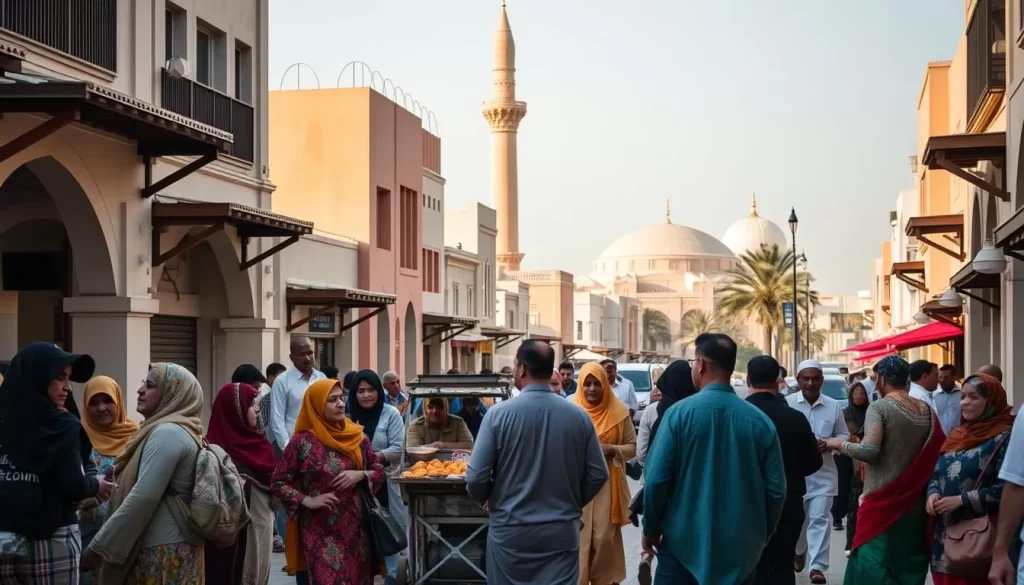
Understanding Kuwait’s Official Language
Modern Standard Arabic serves as the foundation for formal communication. It’s taught in schools and used in official documentation, ensuring consistency across the country. This language connects citizens to their shared history and traditions.
Over time, language policies have evolved to meet the needs of a growing population. Today, it remains a cornerstone of education and governance, shaping the lives of students and professionals alike.
Cultural and Historical Context
The history of this nation’s language is intertwined with its cultural evolution. Regional influences have enriched its dialects, creating a unique linguistic identity. From rural to urban areas, variations in speech reflect local traditions.
For example, 18% of citizens study at private schools, where English is often the medium of instruction. This blend of languages highlights the nation’s adaptability and openness to the world.
Understanding this interplay between language, culture, and education is key to appreciating its vibrant society. It’s a testament to how communication shapes identity and progress.
Kuwait: Official and widely spoken languages
In this vibrant nation, language serves as a bridge between tradition and modernity, shaping every aspect of life. From classrooms to media outlets, it plays a pivotal role in connecting citizens to their heritage while embracing global influences.
The Role of Modern Standard Arabic in Education and Media
Modern Standard Arabic is the backbone of formal communication. It’s the medium of instruction in schools and universities, ensuring consistency across the education system. This language is also dominant in media, from news broadcasts to official publications, reinforcing its importance in shaping public discourse.
For students, mastering this language is essential. It opens doors to higher education and professional opportunities, making it a cornerstone of personal and national growth.
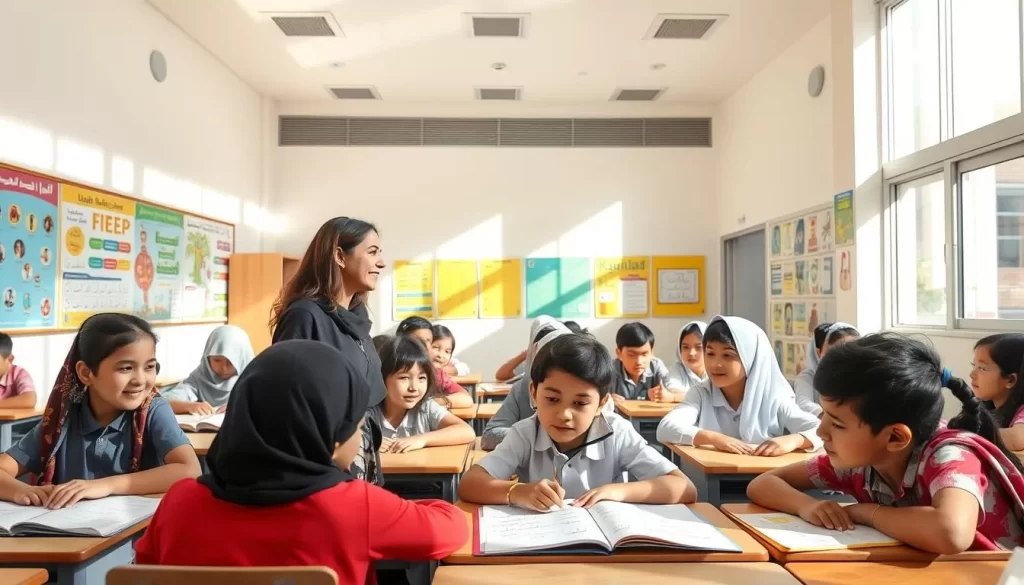
Everyday Use of Kuwaiti Arabic
In daily life, Kuwaiti Arabic takes center stage. This dialect, enriched with loan words from English, Persian, and other languages, reflects the nation’s diverse cultural influences. It’s the language of the streets, homes, and markets, making it a vital part of personal interactions.
For many, this dialect is more than just a way to communicate. It’s a reflection of identity, connecting individuals to their community and heritage.
Insights from Local and Regional Dialects
Local dialects vary across different groups, adding depth to the linguistic landscape. These variations often highlight regional traditions and cultural patterns, offering a glimpse into the nation’s rich diversity.
In business settings, English is sometimes incorporated to cater to a global audience. This adaptability ensures smooth communication in a multicultural environment.
Understanding these dialects provides valuable insights into how language shapes identity and fosters connections in this dynamic nation.
Exploring Immigrant and Foreign Language Influences in Kuwait
The cultural fabric of this nation is enriched by its diverse linguistic influences, shaped by centuries of immigration and global interaction. With nearly 70% of the population consisting of expats, the linguistic landscape has evolved to reflect a blend of traditions and modern practices.
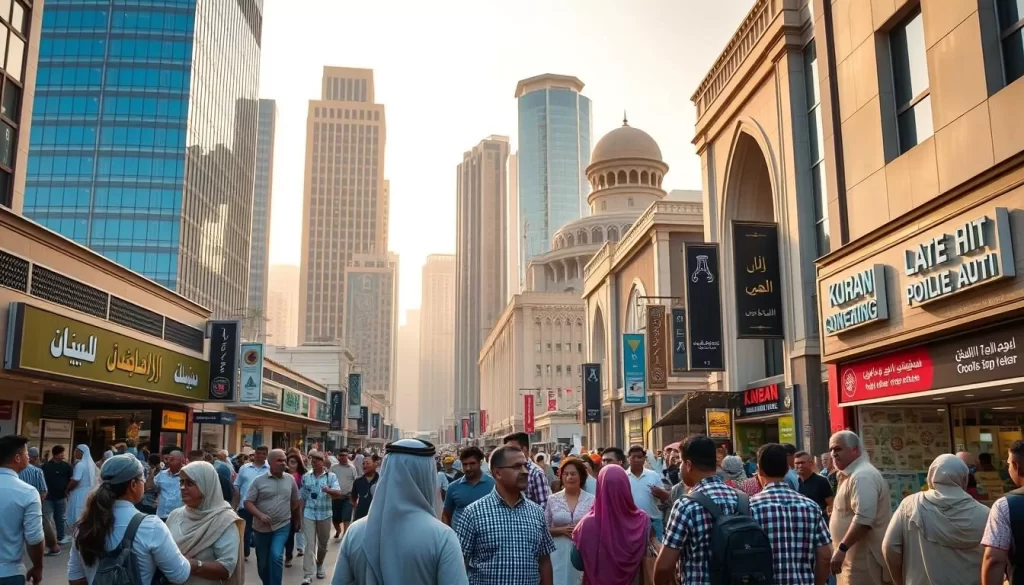
Impact of Expat Communities on Language Diversity
Expat communities play a significant role in shaping the language patterns of this area. Immigrants bring their native tongues, such as Tagalog, Hindi, Urdu, and Persian, creating a vibrant multilingual environment. These languages are often used in homes, workplaces, and social gatherings, adding depth to the nation’s cultural education.
For many expats, maintaining their native language is a way to stay connected to their roots while integrating into the local culture. This balance between tradition and modernity is a defining feature of the linguistic landscape.
The Prevalence of English in Business and Road Signs
English has become a key language in this country, especially in business and public communication. Road signs, official documents, and corporate settings often feature English widely, reflecting a global pattern. This adaptability ensures smooth interactions in a multicultural environment.
In business, English serves as a bridge between local and international partners. It’s not just a language but a tool for fostering connections and driving economic growth. For a typical person, this multilingual approach makes navigating daily life easier and more inclusive.
Government policies and commercial practices have adapted to this diverse linguistic area, ensuring that everyone feels represented. This balance between traditional and modern language patterns highlights the nation’s commitment to inclusivity and progress.
Conclusion
The blend of traditional and modern influences shapes the linguistic identity of this country. Modern Standard Arabic remains central to education and media, while the everyday dialect connects kuwaiti citizens to their heritage. This dual use of language reflects a dynamic balance between tradition and progress.
Immigrant communities have enriched the area, bringing diverse tongues that coexist with local dialects. This multilingual environment highlights the nation’s adaptability and global outlook. Understanding these practices is key to appreciating the life and culture of its people.
From education to business, language plays a pivotal role in shaping connections. It’s a testament to how local traditions merge with world trends, creating a unique cultural tapestry. Dive deeper into the linguistic diversity of the region to explore this fascinating blend.
The above is subject to change.
Check back often to TRAVEL.COM for the latest travel tips and deals.
Here are some Tours & Sightseeing suggestions that might pique your interests!
